
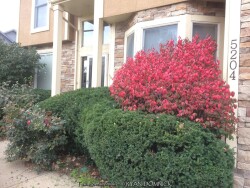
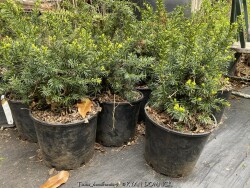
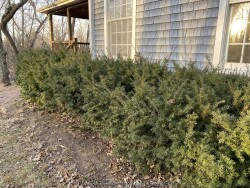
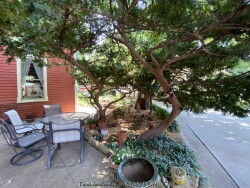
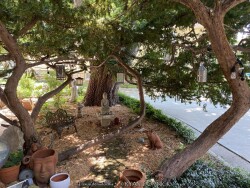
Plant Min Zone: 4a
Plant Max Zone: 7b
Sunlight: Part Sun, Shade, Deep Shade
Water / Rainfall: Low, Average
Soil Quality: Poor, Average, Rich
Bloom Season: Insignificant
Flower Color: Insignificant
Berry / Fruit Color: Red
Spring Foliage Color: Dark Green
Summer Foliage Color: Dark Green
Fall Foliage Color: Dark Green
Evergreen Foliage: Yes
Winter Interest: Yes
Scented Flowers: No
Drought Tolerance: Medium, High
Wet-Feet Tolerance: Low
Humidity Tolerance: Medium
Wind Tolerance: Medium
Poor Soil Tolerance: Clay Soils, Rocky Soils, Sandy Soils, Alkaline Soils (high PH)
Height: 4' - 6'
Width: 4' - 6'
Growth Rate: Slow
Service Life: Extremely long: over 20 years
Maintenance Need: Low
Spreading Potential: Medium
Yearly Trimming Tips: Trim Evergreen Shrub Yearly in Spring or Summer to Desired Size: Not Grown for Flowers or Fruit.
Plant Grouping Size: Specimen Planting of 1-3, Small Grouping of 3-5, Medium Grouping of 5-10
Best Side of House: East Exposure, North Exposure
Extreme Planting Locations: Root-Bound Soils Under Tree
Ornamental Features: Fine Texture
Special Landscape Uses: Noise / Wind Screening, Naturalizing, Hedge Row
Possible Pest Problems: Root Rot Disease, Deer
Plant Limitations: Slow to Reach Mature Size, May be Poisonous, Overused in the Landscape, Needs Frequent Pruning / Trimming, Susceptible to Juglone / Black Walnut
Shippable in 2026: YES
Densiformis Hedge Yew (Taxus x media 'Densiformis') is an evergreen shrub with small flat needle-like dark green leaves. Small red "fruits" form on mature plants with proper pollination and in the absence of pruning. This yew is of hybrid origin along with many varieties ranging from small shrubs to small trees. Taxus x media varieties grow rather slowly and lend themself excellently to being pruned into hedges as long as not too much is taken off at one time. After a plant achieves a certain height, you may keep it that size indefinitely with 3 to 4 times per year pruning. Yews prefer part shade with rich to average well-drained soil and average moisture. Yews planted in the full sun will survive but develop an burnt yellowish green color when temperatures exceed 100°F. This is usually a problem in zone 6 or further south as there are many better choices for full sun (morning sun is okay). In zones 4-5, full sun is probably okay. Yews are best known for their tolerance to dry shade even under root bound conditions. They will not survive more than a couple years under a roof overhang due to lack of moisture in the winter and spider mite problems. In the Eastern and Southeastern United States, Yews have many problems including root rot, insect and disease issues. None of these are a problem in Kansas or Oklahoma with lower rainfall amounts and less humidity. In the landscape, yews offer a year-round structure. They definitely help provide a background for more interesting plants with colorful foliage and flowers. They are also very well known and used in formal garden designs. We prefer to see them less pruned and then there more natural state. A word of caution is that yews are poisonous.